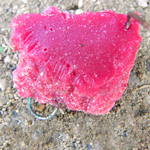RODENT
 |
Impact of Anticoagulant Rodenticides on Ecosystems |
|
Research
Context and Issues
All over the world, rodent populations are controlled with anticoagulant pesticides (ARs) for health, agronomic and/or conservation issues. This means of control has two main consequences on ecosystems: acquisition of resistance by target rodents to the ARs and poisoning of wildlife such as red foxes and raptors.
Objectives
Our research aims to improve the efficiency of rodent control methods to reduce their impacts on both biodiversity and the environment. The RODENT project aims to:
- Identify the genetic basis of resistance to ARs in the Norway rat (Rattus norvegicus).
- Better understand how the alleles of resistance are dispersed within and across rat populations.
- Assess the distribution of ARs in rodent communities and the exposure and impacts of these pesticides on their predators, notably red fox and red kite.
Methodology
When exposed to ARs, biological systems respond in two ways. For example, in the case of genetic resistance of target rodents, molecular modifications occur while impacts on predators are observed on populations. However, resistance and impacts are closely linked. Indeed, resistance may increase the accumulation of AR residues in rats and thus may influence predator exposure.
One of the innovative ideas of the RODENT project is to focus on these two levels of perception by combining chemical and molecular analyses with large-scale approaches of population genetics, field monitoring of populations, and community and spatial modelling.
Results
- In a rural context, following a decline in rat populations, genetic analyses suggested little dispersal of rats between buildings and farms studied; thus, only a few individuals would play a key role in spreading resistance.
- In cities, rat populations have high genetic proximity despite distances between populations ranging from several hundred meters to 7 km.
- Following changes in control practices in the past 10 years, impacts of ARs on fox populations have drastically decreased. However, rodent predators remain widely and chronically exposed to sub-lethal doses of ARs.
Publications
For the entire project:- 7 articles in international scientific journals
- 16 oral or poster presentations in international conferences
- 2 technical papers
For the Ecology of Biological Invasions research group:
COEURDASSIER M., BENOIT E., BERNY P., COSSON J-F., FOUREL I., GIRAUDOUX P., JACQUOT M., PASCAL M., RAOUL F. (2010) The RODENT program: impact of anticoagulant rodenticides on ecosystems – adaptations of target rodents and effect on their predators. 20th European Congress SETAC, Séville.People involved
 |
LE QUILLIEC Patricia, Technician Phone : +33 2 23 48 57 29 Email : patricia.le-quilliec@inrae.fr |
 |
LORVELEC Olivier, Scientist Phone : +33 2 23 48 57 34 Email : olivier.lorvelec@inrae.fr |
Partners
Funding and Support
ANR The french National Research Agency Project, No. 09-CESA-008
